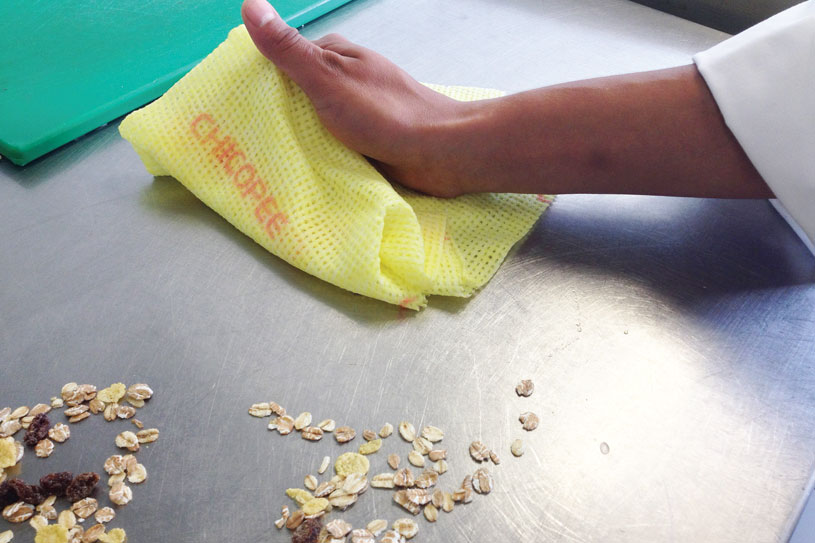Hidden food hygiene risks

Where should you look for hygiene risks in your kitchen? Foodservice businesses know that they should be vigilant when it comes to bacteria – but, because it is often not possible to spot it, there is always a risk that bacteria in your restaurant’s kitchen can go undetected.
A team of scientists at the not-for-profit organisation NSF International recently found (http://www.nsf.org/consumer/newsroom/pdf/fact_germs_germiest_kitchen.pdf) that many seemingly innocuous items in the kitchen are among the most likely harbourers of bacteria.
The study sampled kitchen items from 20 households, looking for E.coli, Salmonella, Listeria, mould, and yeast. Though the study focused on household contaminations, there is plenty that can be learnt from the findings by foodservice businesses.
The NSF study highlighted risks associated with items such as refrigerator storage compartments, can openers and knife blocks.
While spaces like the meat or vegetable compartments of refrigerators are probably already on your kitchen’s list for regular cleaning; but items like can openers and knife blocks are easier to forget when it comes to systematic efforts to maintain hygiene standards.
The NSF team recommends the clear separation of items like washed or packed vegetables, unwashed vegetables, meat, poultry and seafood for instance. The study suggests monthly cleaning as standard for compartments, or more often as required (such as if meat juices are spilled).
Other items are also earmarked as potential risks. The rubber seals around some containers can host bacteria that won’t be reached with a quick clean, as can particular grooves in the moulded plastics. Utensils like rubber spatulas and blender gaskets are highlighted as bacteria carriers too.
Such studies can alarm those in the foodservice business. Being aware of many hidden spots that could be harbouring germs is a daunting prospect when you’re running a busy service.
However, being paranoid about infections everywhere is obviously not the right approach. Nor is turning a blind eye to the possibility of harbouring bacteria on items used in your kitchen.
Take the time to assess your food preparation processes. What items come directly into contact with food? What do these items then come into contact with? Importantly, what are your hands touching after touching food, but prior to being washed?
Careful walkthroughs of typical daily processes will help spot points at which food safety and hygiene may are at risk of being compromised. Sessions to pinpoint potential for bacteria spreading and find solutions will ensure that contamination risks are minimised. The result is a sense of reassurance that your customers and business won’t be harmed by the invisible threat of bacteria.

